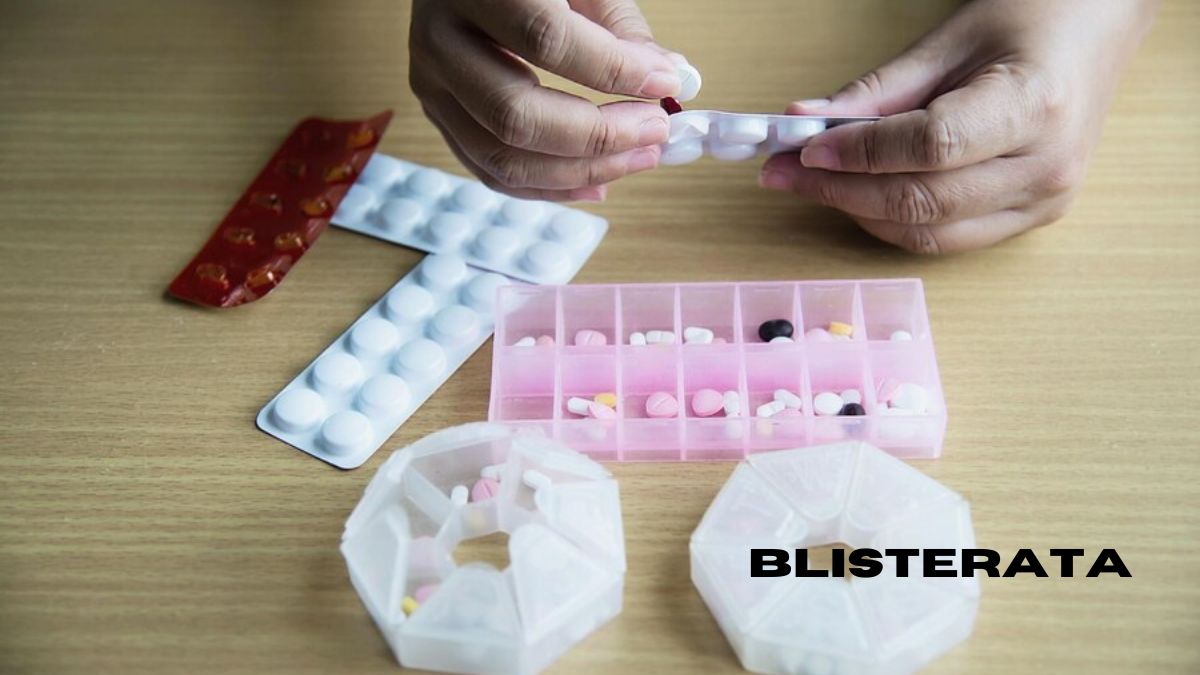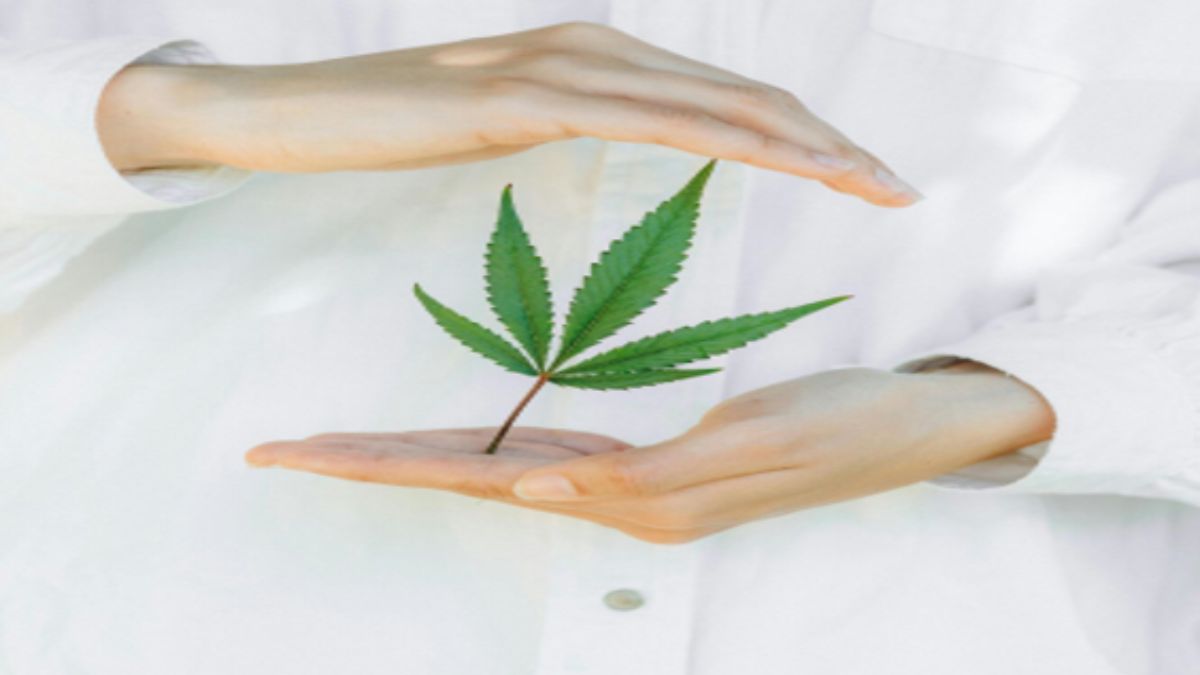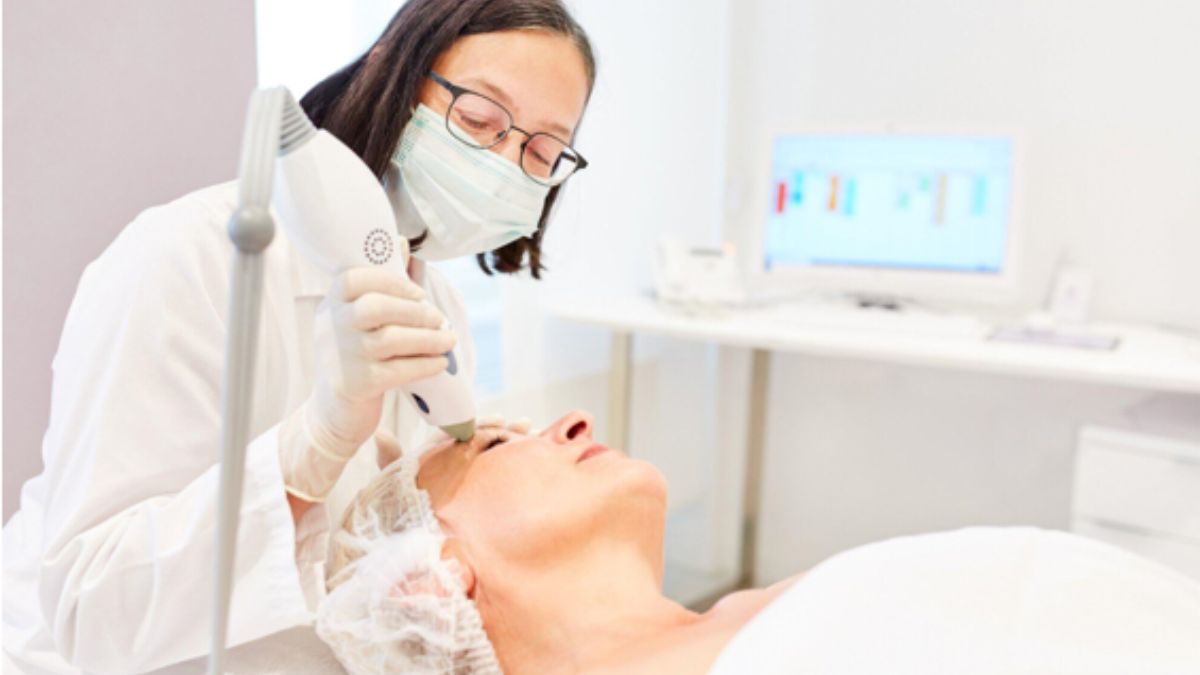HEALTH
Blisterata: How to Properly Care for Blisters

Welcome to the ultimate guide on how to properly care for blisters – we call it Blisterata! Blisters can be a real pain, literally, and knowing how to treat them effectively is essential for your comfort and well-being. In this blog post, we’ll delve into what causes blisters, why it’s crucial to treat them correctly, home remedies you can try, prevention tips to keep them at bay, when it’s time to seek medical help, and more. So sit back, relax, and let’s get your feet (and hands) blister-free in no time!
What are Blisterata?
Blisters are fluid-filled sacs that form on the skin, typically caused by friction or pressure. They can appear on various parts of the body, such as the feet, hands, and even inside the mouth. These little bubbles may start off as a hot spot before developing into a full-blown blister.
The fluid inside blisters is usually clear but can sometimes be yellowish if an infection occurs. Blisters act as a protective barrier for the damaged skin underneath, allowing it to heal without further irritation.
Common causes of blisters include wearing ill-fitting shoes, repetitive rubbing or friction from tools or sports equipment, sunburns, and certain medical conditions like eczema or herpes.
While most blisters heal on their own within a few days with proper care, some may require medical attention if they become infected or excessively painful. Understanding what blisters are and how they form is key to effectively managing them when they arise.
Causes of Blisterata
Blisters are often caused by friction, which occurs when the skin rubs against another surface repeatedly. This repetitive motion can create a separation between the layers of your skin, leading to fluid accumulation and the formation of a blister.
Ill-fitting footwear or socks that cause chafing are common culprits for blisters on the feet. Similarly, wearing new shoes that haven’t been broken in can also lead to blister formation as they rub against sensitive areas.
Burns from hot surfaces or liquids can result in blistering as well. The heat damages the skin cells, prompting the body to produce fluid to protect and heal the affected area.
Certain medical conditions like eczema or allergic reactions may also cause blisters to develop on the skin due to inflammation and irritation. Additionally, sunburns can lead to painful blisters as a result of overexposure to UV radiation.
Understanding these various causes is essential in preventing blisters and maintaining healthy skin integrity.
The Importance of Properly Caring for Blisterata
Properly caring for Blisterata is crucial to prevent infection and promote faster healing. Neglecting blisters can lead to discomfort, pain, and potential complications. By taking the time to address blisters promptly and effectively, you can minimize their impact on your daily activities.
Ignoring blisters may seem tempting, but it’s essential to remember that they serve as a protective barrier for the skin underneath. Improper treatment like popping or tearing off the blister can expose the delicate skin beneath it, making it vulnerable to infection.
By keeping Blisterata clean and covered with a sterile dressing, you create an optimal environment for healing. This simple step helps reduce friction and pressure on the affected area, allowing natural recovery mechanisms to take place.
Remember that even small blisters should be treated with care. Whether caused by ill-fitting shoes or repetitive motion, these fluid-filled sacs require attention to prevent them from becoming a bigger issue down the road.
Steps to Take When You Get a Blisterata
When you notice a blister forming on your skin, it’s essential to take immediate action to prevent further discomfort and potential infection. The first step is to clean the area around the blister with mild soap and water.
Next, gently pat the area dry with a clean towel – avoid rubbing as it can irritate the blister further. To protect the blister from friction and pressure, consider covering it with a bandage or moleskin padding.
If the blister is intact, try not to puncture it unless absolutely necessary. Popping blisters increases the risk of infection but if it bursts on its own, gently clean the area again and apply an antibiotic ointment.
To help alleviate pain and promote healing, elevate the affected area whenever possible to reduce swelling. Additionally, refrain from wearing tight-fitting shoes or clothing that may rub against the blister.
Remember that proper care for blisters is crucial in ensuring a speedy recovery without complications!
Home Remedies for Treating Blisters
A blister can be a painful nuisance, but there are several home remedies that can help alleviate discomfort and promote healing. One effective remedy is to gently clean the blister with soap and water to prevent infection. Avoid popping the blister unless it’s large, as the skin acts as a natural barrier against bacteria.
You can apply aloe vera gel or petroleum jelly to keep the area moisturized and protect it from friction. Covering the blister with a bandage or moleskin can also provide cushioning and prevent further irritation. If the blister does pop on its own, make sure to keep it clean and covered to avoid infection.
Another popular home remedy is soaking your feet in warm salt water or using Epsom salts for blisters on hands or feet. This solution can help dry out the blister while soothing any discomfort you may be experiencing. Remember, always consult with a healthcare professional if you have concerns about your blisters’ severity or if they show signs of infection.
Prevention Tips for Avoiding Blisters
Prevention is key when it comes to avoiding the discomfort of blisters. One effective tip is to wear properly fitting shoes that provide ample support and cushioning for your feet. Avoid tight or loose footwear that can cause friction and rubbing, leading to blister formation.
Moisture-wicking socks can also help keep your feet dry and reduce the risk of blisters. Opt for socks made from breathable materials like cotton or moisture-wicking blends. Additionally, consider using padding or bandages on areas prone to blistering, such as heels or toes, before engaging in activities that may increase friction.
Regularly inspect your feet for any signs of redness or irritation that could indicate a potential blister forming. If you feel any discomfort while wearing shoes, take a moment to adjust them to prevent rubbing against your skin. Taking these proactive steps can go a long way in preventing blisters and keeping your feet happy and healthy!
When to Seek Medical Attention
If you notice signs of infection such as increasing pain, redness, warmth, or pus draining from the blister site, it’s crucial to seek medical attention promptly. Infections can lead to more serious complications if left untreated. Additionally, if you have a large blister that is extremely painful or affecting your mobility, it may be best to consult a healthcare professional for proper care.
People with certain medical conditions like diabetes should be especially cautious when dealing with blisters as they are at higher risk of complications. If you develop multiple blisters in the same area or experience recurrent blistering without an obvious cause, a visit to a healthcare provider is advisable to determine the underlying issue and prevent future occurrences.
Remember, your health is important and seeking medical advice when necessary can help ensure proper treatment and avoid potential complications down the road.
Conclusion
Taking care of Blisterata is essential for maintaining healthy skin and preventing infections. By following the proper steps to treat blisters promptly and effectively, you can speed up the healing process and avoid complications. Remember to always keep your feet clean and dry, choose comfortable footwear, and address any friction or pressure points promptly. If you develop a blister that shows signs of infection or does not improve with home remedies, it’s crucial to seek medical attention from a healthcare professional. Prioritizing blister care will help keep your feet happy and healthy in the long run!
HEALTH
The Role of Community in Veteran Health and Wellness

Did you know that a strong community connection can play a transformative role in the health and wellness of our veterans? In recent years, studies have shown that social integration significantly boosts mental health and overall well-being, especially for those who have served in the military.
Veterans often face unique challenges, and having a supportive community can be a crucial factor in their recovery and sustained health. This article explores the vital importance of a community in veteran health and how senior living options can enhance their overall quality of life. Keep on reading.
The Importance of Community in Veteran Well-Being
For veterans transitioning back into civilian life, the shift can often feel overwhelming. Many struggle with feelings of isolation and alienation from those who haven’t shared similar experiences. This is where a sense of community becomes essential.
A supportive network helps veterans feel connected and valued. In senior living environments, fostering a community spirit can lead to:
A Sense of Belonging
Veterans often feel better when they know others share their past. Living with peers who understand can make them feel safe. This helps build real friendships and trust.
Improved Mental Health
Being around others can ease sad or anxious thoughts. Talking, laughing, and sharing stories helps the mind. These small moments lift spirits each day.
Physical Health Benefits
Group activities like walks or games keep the body moving. Staying active with others can be more fun. It helps veterans stay strong and feel better.
Easy Access to Resources
A strong group can guide members to helpful tools. It’s easier to ask for help when others understand. Veterans find what they need without feeling lost.
How Senior Living Enhances Social Connections
Many places where seniors live are made to feel like a strong community. Some have special programs just for veterans. These programs help them feel supported and connected with others.
There are group trips, fitness classes, and other fun things planned for veterans. These keep them busy, happy, and moving. It also helps them meet people who understand them.
Some places also give extra care for mental health. Veterans can talk to people who know about things like PTSD. Being around others with similar stories can help them feel less alone.
Building Supportive Care Frameworks
Supportive care is more than just meeting physical needs; it’s about holistic wellness that encompasses emotional, mental, and social aspects. Within a community-focused approach, veterans can tap into:
- Peer support groups
- Integrative wellness programs
- Access to healthcare
The Unique Proposition of Community-Focused Senior Living
Choosing a senior living arrangement that emphasizes community focus provides veterans with the unique opportunity to enhance their quality of life. Not only can they maintain independence, but they can also engage in a variety of activities designed to foster relationships and an active lifestyle.
Facilities that prioritize a community focus in veteran health often include programming tailored specifically for them. They offer more than just a place to live. Veteran programs for seniors create a supportive atmosphere promoting veteran wellness through engagement, shared experiences, and friendship.
Invest in Your Health and Well-Being Today!
If you or a loved one is a veteran looking for a welcoming community, consider exploring options that offer comprehensive support and a vibrant community in veteran life. With a focus on wellness and connection, you can conquer the challenges of daily living and thrive among peers who understand and appreciate your journey. Your health and well-being deserve a community that cares.
For more related topics, check out the rest of our blog!
HEALTH
How Cannabis Extracts are Redefining Medical Applications

How can one plant help with so many health needs?
Cannabis extracts are now used in new ways to treat different medical problems. These extracts come in forms like oils, drops, and pills. Many people use them to feel better without strong drugs.
Doctors and patients are starting to see the value of these products. They are easy to use and made with care. If you’re looking for new ways to feel better, cannabis extracts might be worth a try. Want to learn more about how they work and how they can help? Keep reading!
Managing Pain
Many people deal with pain each day, and finding safe ways to manage it matters. Cannabis extracts are giving new hope by offering support for pain that doesn’t always respond to common treatments.
These extracts may help with joint pain, nerve pain, and pain from injuries. They work by interacting with the body’s systems in a natural way. Unlike some strong drugs, they are less likely to cause harm with long use.
Doctors are now looking at these extracts as a helpful tool for people with ongoing pain. As more studies are done, more is learned about their benefits. To stay informed about growing options for care, reading articles like these can help guide smart choices.
Helping with Sleep
Trouble falling asleep or staying asleep can affect daily life. Cannabis extracts are now being used to support better sleep by helping the body relax at night. Some people say they fall asleep faster and wake up less often.
These extracts may work by calming certain parts of the brain that stay active during rest. Many users prefer them over common sleep aids because they feel more natural. They are often taken as drops or capsules before bedtime.
People who have tried other sleep methods without success are now turning to this option. As more is learned, cannabis extracts may become a trusted part of nightly routines. For those hoping to wake up feeling more rested, they could be a step toward better sleep.
Easing Anxiety and Stress
Busy days and constant pressure can lead to feeling overwhelmed. Cannabis extracts are now being used to help ease anxiety and lower stress levels. Some people say they feel calmer and more balanced after using them.
These extracts may work by helping the brain respond better to stress signals. They are often taken in small amounts during the day and may support a more peaceful state of mind in daily life.
Supporting Appetite and Nausea Relief
Feeling sick or not wanting to eat can make recovery harder. Cannabis extracts are now being used to help reduce nausea and improve appetite. This can be helpful for people going through treatments that make eating difficult.
The extracts may work by calming the stomach and making food seem more appealing. They are often taken in small doses and come in easy-to-use forms. For some, they offer simple support during times of low appetite or queasiness.
Exploring New Paths with Cannabis Extracts
Cannabis extracts are opening new doors in medical care, offering support in ways that were once hard to find. From easing daily struggles to helping with serious health challenges, these extracts are changing how treatment can look and feel.
Their growing use shows how natural options are becoming part of trusted care plans. As research continues, more people may find comfort and balance through these products. Exploring new paths with cannabis extracts in modern care shows how far healing can go.
Did you find this article helpful? Visit our website for more awesome content like this.
HEALTH
Understanding the Aesthetic and Health Benefits of Blepharoplasty

Have you ever looked in the mirror and wished for a change? If tired eyes are affecting how others see you, blepharoplasty could help. This procedure offers a way to refresh your look and boost your confidence.
Many people feel self-conscious about their eyes. They may be a bit droopy or puffy, which can age the face. Blepharoplasty is designed to address these concerns, allowing you to feel confident about your appearance again.
In this article, we will discuss the aesthetic and health benefits of blepharoplasty. Read more!
Removing Excess Skin for Clearer Vision
Excess eyelid skin can droop over the eyes and block your sight. This often makes daily tasks like reading or driving harder than they should be. Removing this skin can help restore a full, clear field of vision.
One of the key blepharoplasty benefits is the improvement in both appearance and function. Patients often feel more alert and look more refreshed after surgery. With better vision and comfort, daily life becomes easier and more enjoyable.
Reducing Eye Strain and Fatigue..
Eye strain is a common issue for many people today. Stress and daily demands can leave your eyes feeling tired and overworked. Blepharoplasty can significantly reduce this fatigue and refresh your overall appearance.
After the procedure, individuals often report that their eyes feel lighter and less strained. This new comfort might allow for longer periods of focus on tasks. Feeling less tired can also improve your mood and boost your energy levels.
Correcting Puffy or Droopy Eyelids
Puffy or droopy eyelids can impact both your looks and comfort. People often choose blepharoplasty to address these issues. This transformation brings a more alert and youthful gaze.
Your eyes are a vital part of your expression. Correcting droopiness can make them appear larger and brighter. Increased confidence follows, as many feel more attractive and engaged with the world.
Enhancing Facial Balance and Symmetry
Facial symmetry plays a significant role in perceived beauty. Blepharoplasty helps align your eyes and eyelids, promoting a more harmonious look. This balance enhances facial aesthetics dramatically.
A proper alignment may boost your overall self-esteem. Feeling more balanced and beautiful can change how you approach social situations. Many report newfound confidence after achieving this desired symmetry.
Improving Self-Image and Emotional Well-Being
When you look good, you often feel good too. The mental clarity that comes with improved appearance is powerful. Many experience enhanced self-image after undergoing Blepharoplasty.
People often report feeling more capable in social settings and daily interactions. An improved self-image can lead to better opportunities. Embracing self-care through surgery can also be a pivotal moment for many.
The Transformative Power of Blepharoplasty
Blepharoplasty is more than just a physical change; it can greatly enhance your quality of life. Addressing common eyelid concerns can boost your self-confidence and improve visual comfort. Consider this procedure if you’re looking to revitalize your appearance.
Connecting with a professional can help you understand how Blepharoplasty might work for you. Take the first step towards refreshed eyes and a renewed spirit. You deserve to feel confident in how you look every day.
Did this article help you? Browse our blog for more interesting topics.
-

 HEALTH1 year ago
HEALTH1 year agoIntegrating Semaglutide into Your Weight Loss Plan: A Practical Guide
-

 HOME IMPROVEMENT1 year ago
HOME IMPROVEMENT1 year agoHow to Choose the Perfect Neutral Area Rug for Every Room
-

 LAW1 year ago
LAW1 year agoPost-Divorce Considerations in California: Modifications and Long-Term Planning
-

 LAW1 year ago
LAW1 year agoTeenage Drivers and Car Accidents in California: Risks and Parental Liability
-

 CONSTRUCTION1 year ago
CONSTRUCTION1 year agoConstruction Site Safety Regulations in New York and Your Rights as a Worker
-

 FINANCE1 year ago
FINANCE1 year agoDigital Asset Management in Florida Estate Planning
-

 LAW1 year ago
LAW1 year agoKentucky’s School Football: Concussions, Injuries, and Legal Options
-

 LAW1 year ago
LAW1 year agoGang Activity and Criminal Charges in CA: Protecting Your Rights
